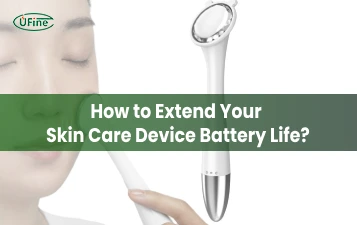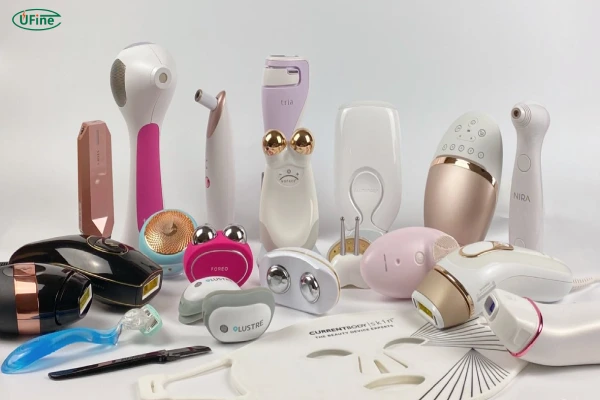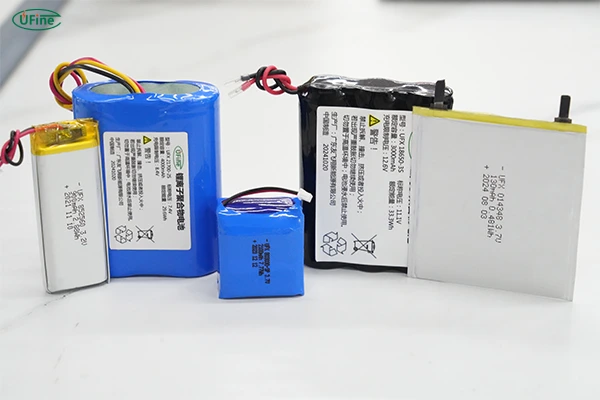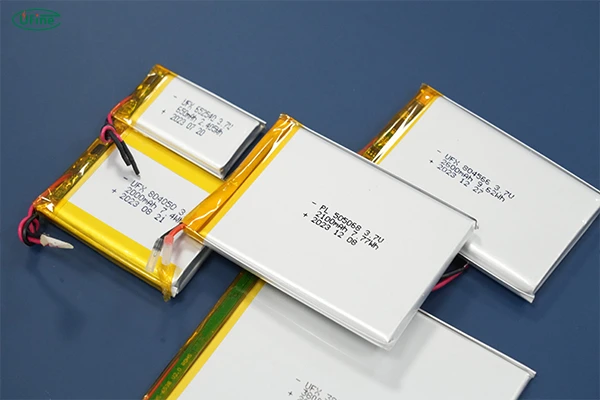Part 1. Why battery life drives beauty device users crazy
If you’ve ever dealt with a beauty device that can’t hold a charge, you’re not alone. Battery life is one of the biggest pain points for rechargeable beauty tools. Whether it’s a facial cleansing brush, microcurrent device, or red light therapy panel, a short-lived battery can turn a premium product into a frustrating disappointment.
But here’s the good news: Not all batteries are created equal. Some last for months, while others barely make it through a week. The key lies in understanding battery types, performance, and maintenance—so you can invest in a device that truly lasts.
So today, we’re diving deep. Which beauty devices last the longest? Which battery types perform best? And how can you make smarter choices when shopping for your next tool?
Let’s get into it.
Part 2. Beauty device battery life rankings
After tons of real-world reviews, lab tests, and user feedback, we’ve gathered a detailed comparison of popular rechargeable beauty devices. Here’s how they stack up:
| Brand | Model | Battery Life (per charge) | Charging Time | Battery Type |
|---|---|---|---|---|
| Foreo | Luna 4 | Up to 600 uses | 2 hours | Lithium-ion |
| NuFACE | Trinity | 2–3 weeks (daily use) | 12 hours | Nickel-metal hydride (NiMH) |
| PMD | Clean Pro | 60 days (daily use) | 3 hours | Lithium-ion |
| ZIIP | GX Series | 14 days (daily use) | 3.5 hours | Lithium-polymer |
| TriPollar | STOP Vx | 7 days | 2 hours | Lithium-ion |
Let’s break this down:
- Foreo Luna 4 is the undisputed king of battery life — lasting months between charges!
- PMD Clean Pro also performs impressively, making it perfect for travelers.
- NuFACE Trinity, despite its fame, has slower charging and needs more frequent topping off.
- ZIIP GX offers cutting-edge skincare tech but sacrifices some battery duration.
- TriPollar STOP Vx needs weekly charging — manageable, but not ideal if you hate cables.
Observation: Devices with lithium-ion or lithium-polymer batteries outperform older battery types.
Part 3. Comparing battery types: which lasts the longest?
Now, let’s get technical — but stay with me, it’s easier than it sounds!
Here’s a table comparing the most common battery types in rechargeable beauty devices:
| Battery Type | Typical Lifespan | Charge Cycles | Pros | Cons |
|---|---|---|---|---|
| Lithium-ion (Li-ion) | 3–5 years | 500–1000 cycles | High energy density, fast charging | Can degrade if overcharged |
| Lithium-polymer (Li-Po) | 2–4 years | 300–800 cycles | Lightweight, flexible shapes | Shorter lifespan vs. Li-ion |
| Nickel-metal hydride (NiMH) | 2–5 years | 500–1000 cycles | Stable performance, affordable | Higher self-discharge rate |
| Lithium iron phosphate (LiFePO4) | 5–10 years | 2000–5000 cycles | Very stable, very long life | Lower energy density |
| Nickel-cadmium (NiCd) | 2–5 years | 1000–1500 cycles | Durable, resistant to overcharging | Memory effect, toxic materials |
| Alkaline (non-rechargeable) | 1–2 years (single use) | N/A | Cheap, widely available | Not rechargeable, not eco-friendly |
| Lead-acid | 3–5 years | 300–500 cycles | Very inexpensive, robust | Heavy, low energy density |
Key Takeaways:
- Lithium-ion batteries are the most common — they deliver strong, reliable performance.
- Lithium-polymer offers safety and design flexibility but can lose charge faster.
- LiFePO4 batteries (lithium iron phosphate) are emerging — safer and longer-lasting, but slightly bulkier.
Pro tip: If you’re building custom beauty devices or upgrading designs, consider sourcing advanced batteries like LiFePO4. Ufine Battery, a leading Chinese custom lithium battery manufacturer, can customize lithium polymer batteries, LiFePO4 batteries, 18650 cells, ultra-thin batteries, and more — perfectly matching your needs. Contact Ufine Battery here to get expert advice and high-quality battery solutions!
Part 4. How to choose the right battery for your beauty device?
Choosing your beauty device isn’t just about brand names. The battery inside can make or break your experience.
Here’s what you should always check:
1. Voltage Compatibility
- Using the wrong voltage can damage your device. Check the original battery’s specs.
2. Capacity (mAh Rating)
- Higher mAh = longer runtime. For example:
- 500mAh = ~1 hour of use.
- 1000mAh = ~2+ hours.
3. Charge Cycles
- 500+ cycles = Good lifespan.
- Below 300 cycles = May degrade quickly.
4. Charging Time
Devices like NuFACE require overnight charging. If you’re busy, fast-charging models are worth every penny.
5. Battery Type
Always prefer lithium-ion, lithium-polymer, or LiFePO4 for reliability, speed, and safety.
6. Size and Weight
A huge battery can mean a bulky device. Find the right balance between size and power.
7. Replacement Options
Can you replace the battery when it dies? Some brands force you to buy a whole new device — ouch!
8. Safety and Certifications
Look for CE, RoHS, UN38.3 certifications to ensure your battery and device are safe for daily use.
Remember: the beauty device is only as good as the battery running it.
Part 5. How to extend the battery life of your beauty devices
Once you’ve invested in a high-quality device, you’ll want to keep it running perfectly as long as possible. Here’s how:
- Unplug After Full Charge: Overcharging stresses the battery. Avoid leaving it plugged in overnight, unless the manual says it’s safe.
- Use Regularly: Batteries “like” being used. Leaving your device idle for months can harm the battery.
- Avoid Extreme Temperatures: Don’t store your device in the bathroom where it gets steamy or in a cold car.
- Follow the Manufacturer’s Guidelines: Some beauty devices have firmware updates that optimize charging patterns — yes, even beauty tech gets smarter!
- Store Properly for Long Periods: If you’re not using it, charge it halfway and store it in a dry, cool place.
- Clean Charging Ports: Dirt and oils can interfere with charging. Wipe them gently now and then.
Taking these small steps seriously will dramatically extend your beauty device’s lifespan and save you money in the long run.
Part 6. Final thoughts: Invest in battery quality for a truly beautiful experience
When you’re buying a rechargeable beauty device, it’s not just about fancy features — it’s about freedom. Freedom from charging anxiety. Freedom to focus on self-care, not maintenance.
Choosing a device with a strong, safe battery — like a lithium-ion or lithium-polymer — ensures a smoother, happier beauty journey. And if you’re developing a beauty device of your own or upgrading an existing design, Ufine Battery can help you create a battery solution that fits perfectly.
Part 7. FAQs
What’s the best battery type for beauty devices?
Lithium-ion and lithium-polymer batteries offer the best balance of long life, fast charging, and safety.
Should I completely drain my beauty device before charging?
No! That’s old advice from NiCd battery days. Modern lithium batteries actually prefer partial charges.
Why does my beauty device battery die faster over time?
All batteries degrade naturally after hundreds of charge cycles. Hot environments, overcharging, and poor-quality chargers speed up aging.
Can I replace the battery myself?
Sometimes yes, sometimes no. Some brands make it easy. Others lock you into buying a whole new unit.
Can I get a custom battery for my discontinued beauty device?
Yes! Companies like Ufine Battery specialize in custom lithium batteries for unique or older models.
Related Tags:
More Articles

Top Tips to Make Your Skin Care Device Battery Last Longer
Maximize your skin care device battery life with expert tips on charging, cleaning, and usage. Avoid common mistakes and keep your device running like new!
60Ah Battery: The Complete Guide You Need Before Choosing One
Find out if a 60Ah lithium battery is right for you. Learn about its lifespan, costs, maintenance tips, and how to pick the best one!
Is a 3000 mAh Lithium Battery Enough for Your Device?
Wondering what a 3000mAh battery means? Learn about its power, lifespan, types, and how to choose the best one for your device!
Learn About Lithium Battery Kits
Discover the ultimate guide to lithium battery kits—types, safety, installation, and cost analysis. Make the right choice for solar, RV, or off-grid power!
Selecting the Perfect Ah for Your 48V Li-ion Battery Pack
Struggling to choose the right Ah for your 48V Li-ion battery pack? This in-depth guide covers everything you need to make the best choice. Find out more now!






